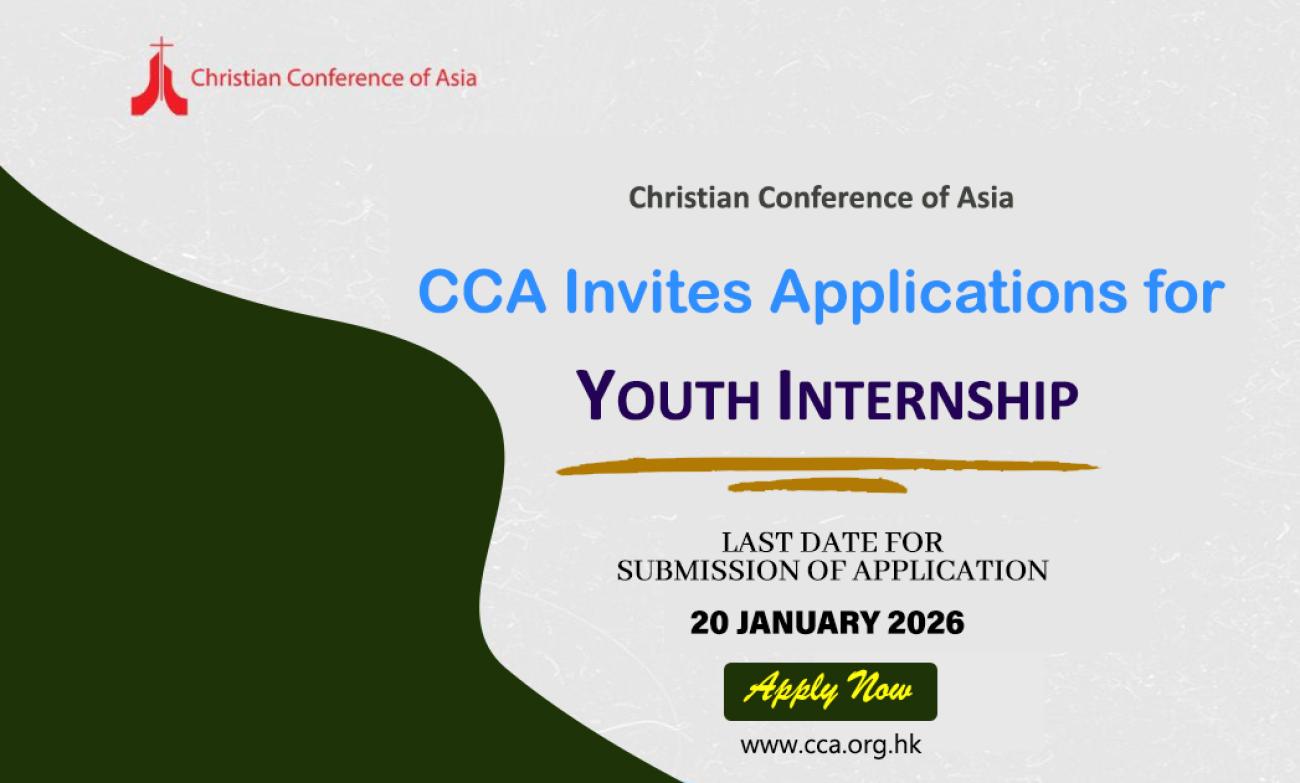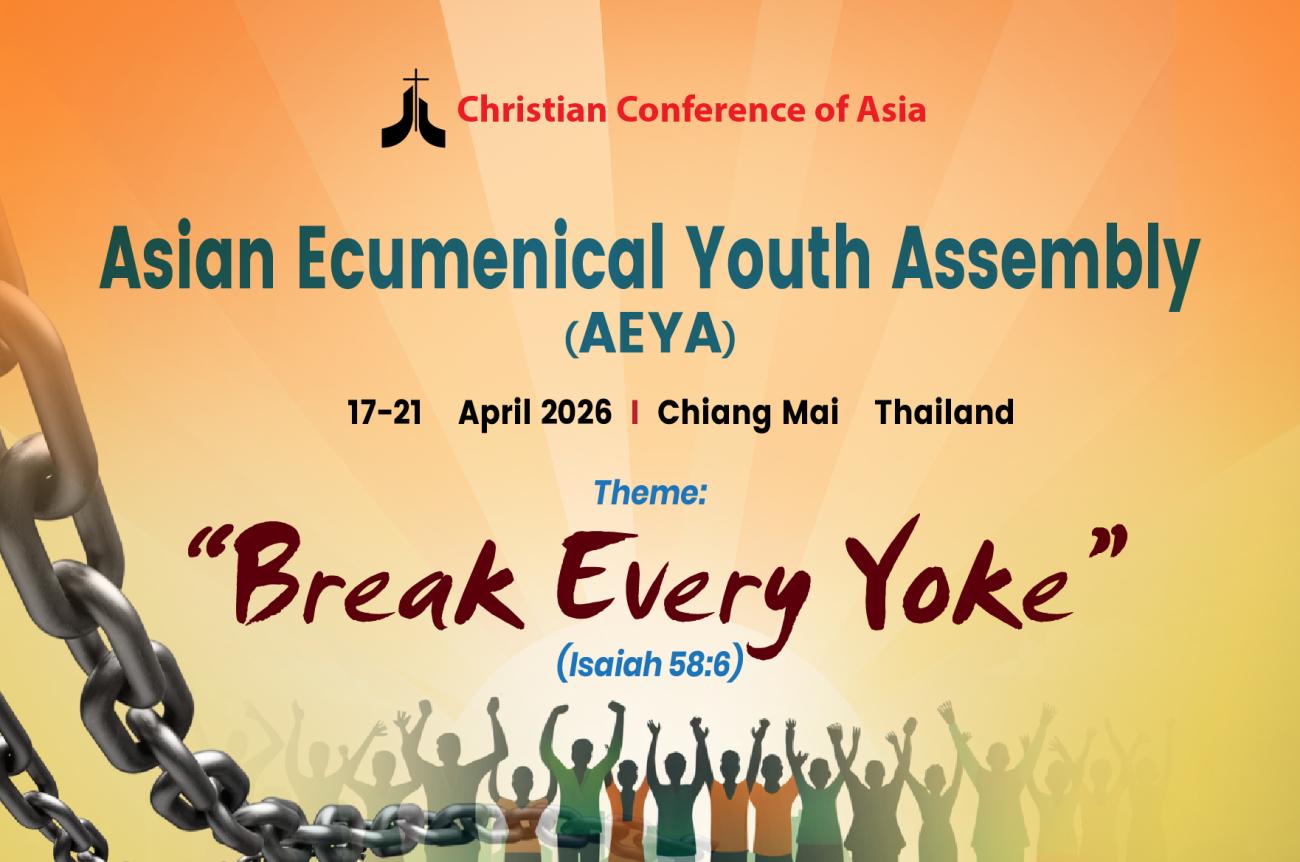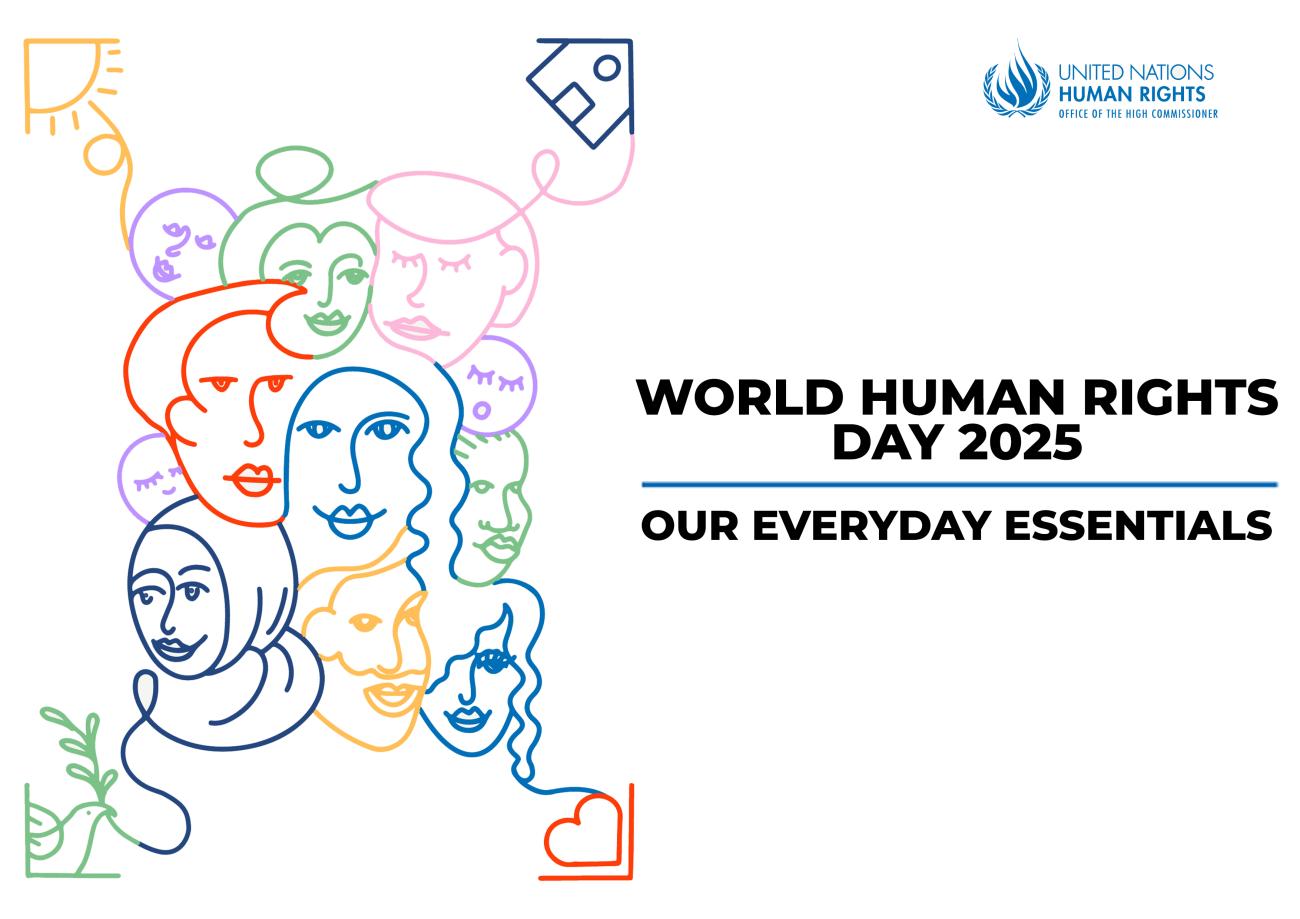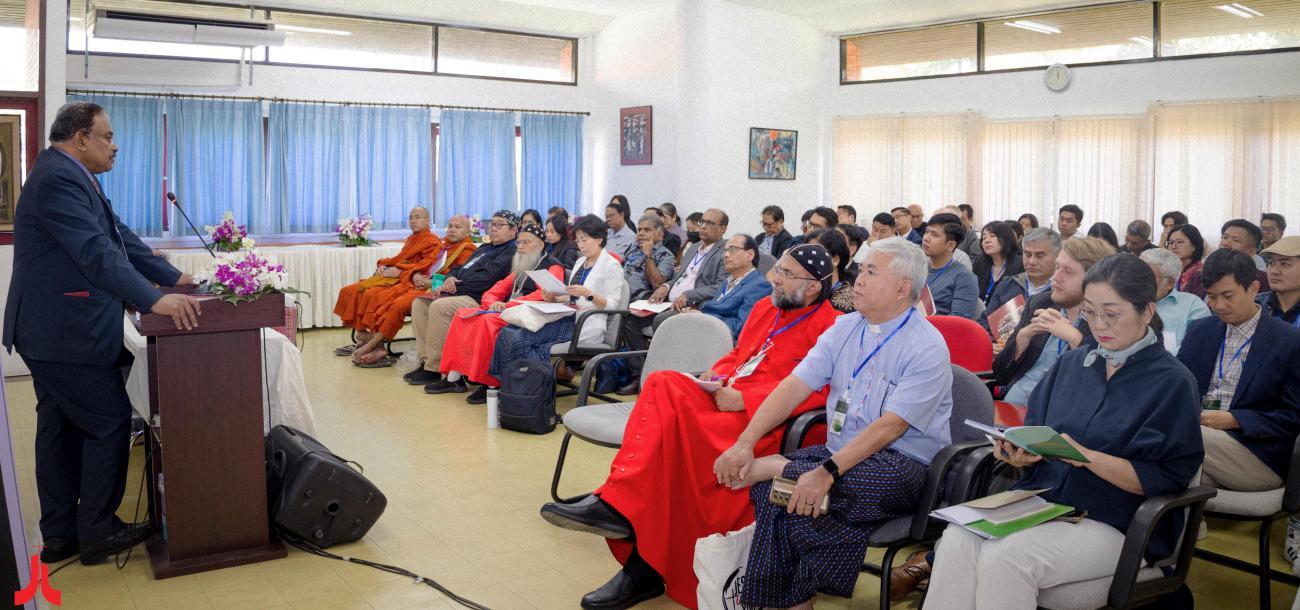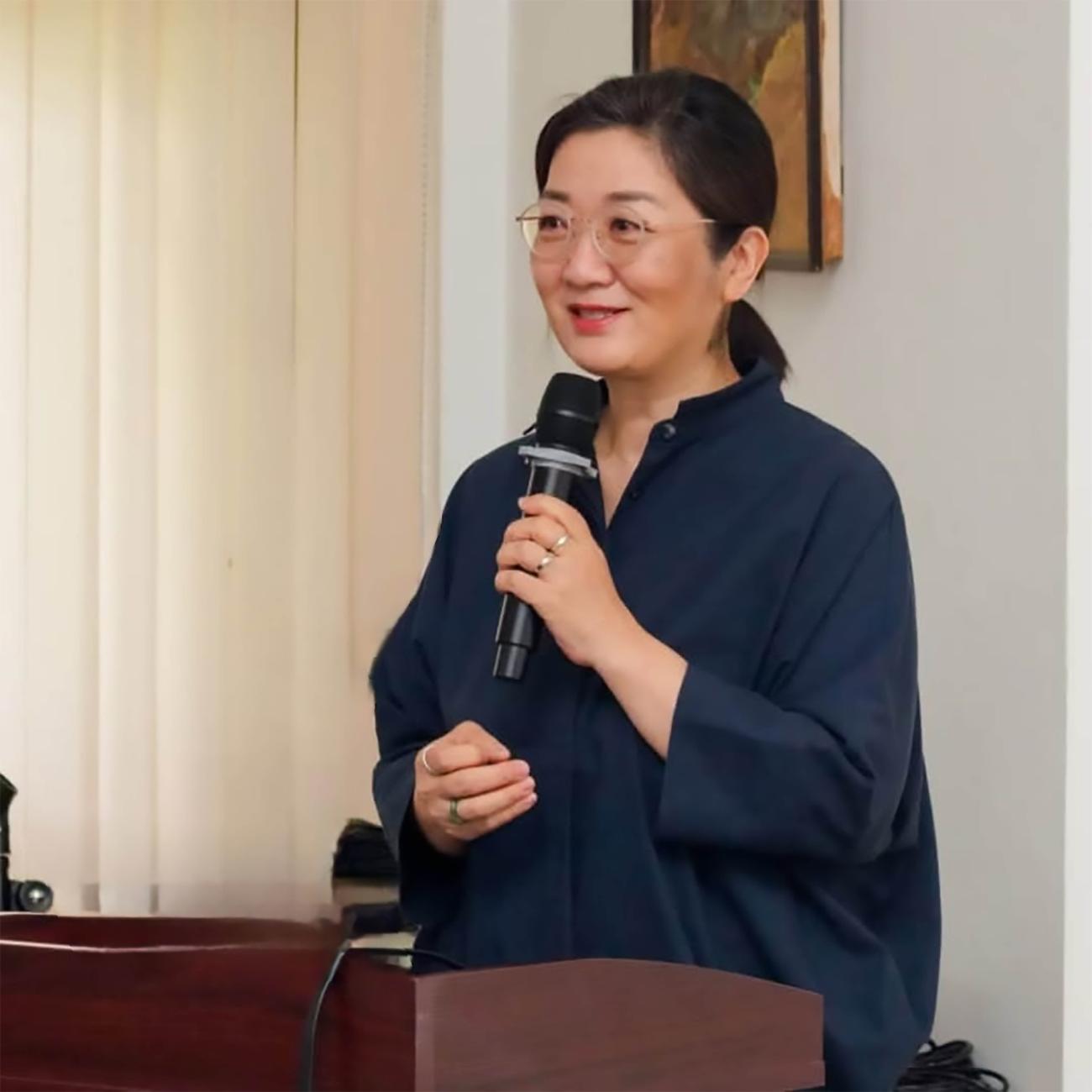Homage to the charismatic Church and Ecumenical leader in Lao PDR – The Rev. Dr Khamphone Kounthapanya
— Mathews George Chunakara*
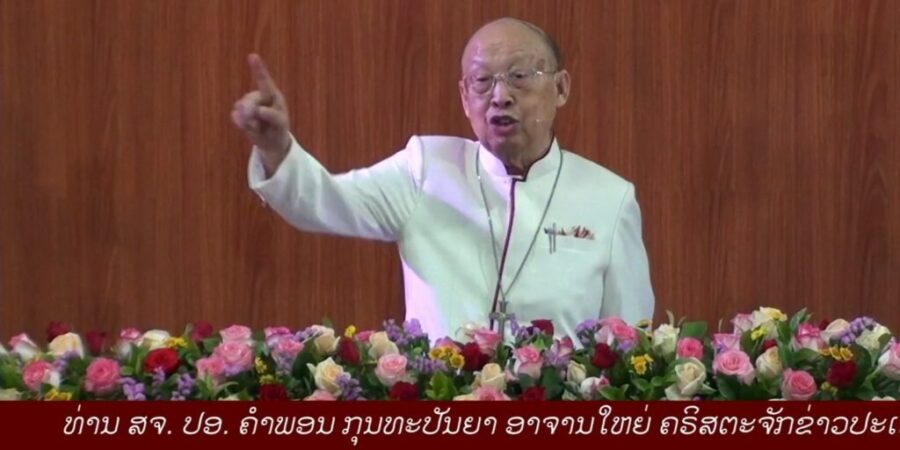
The Rev. Dr Khamphone Kounthapanya, Executive President of the Lao Evangelical Church (LEC) in the Lao People’s Democratic Republic (Lao PDR), a charismatic Asian church leader and committed ecumenist, ended his earthly sojourn and returned to heavenly abode on 3 January 2022. The renowned and charismatic church leader, Rev. Dr Khamphone Kounthapanya, known for his untiring and unwavering personality, was a renowned Biblical scholar and Christian educator. Affectionately called Acharn Khamphone by Lao People, irrespective of their faith or ideological affiliations and membership, Rev. Dr Khamphone could win everyone over. As a committed and patriotic Christian leader in Lao, PDR one of the last remaining communist countries in the world, he was revered and admired by people at large. On his handsome face, there always glittered a graceful smile; he walked among his people and taught them, preached to them and remained as their charismatic leader. He served the church in different capacities as a Pastor, theological educator, Bible school teacher, General Secretary; and finally as the Executive President of the LEC, he was instrumental in rebuilding the foundations of a totally ruined Christian Church in Lao PDR. Christianity, which had almost disappeared from Laos since the mid-1970s, was able to revive only under the dynamic leadership of Rev. Khamphone. He remained the senior-most leader of the Lao Evangelical Church until he passed away.
I have had opportunities to associate closely with Rev. Dr Khamphone for almost thirty years. My first encounter with Rev. Khamphone was in 1993 when I started working as the Liaison Secretary of the Indo-China (Vietnam, Laos, and Cambodia) programme jointly initiated by the Christian Conference of Asia (CCA) and the World Council of Churches (WCC). In a country where foreigners’ visits or presence was restricted and secretly watched by the then communist government authorities, Rev. Khamphone and his colleague Rev. Bee Thao met me for the first time in the lobby of the Lane Xang Hotel near the riverside in Vientiane. I noticed at first sight itself the graceful and elegant smile on Rev. Khamphone’s face, but during the conversation, while sitting at the hotel lobby, I could sense his nervousness or fear as he was vigilantly looking around for prying eyes and ears. During my next three days of stay in the capital, Vientiane at that first visit, I learnt more about the situation. The church leaders were not allowed to openly mingle with foreigners in those days. This was mainly due to the historic past of the Lao churches and their leaders who were accused of being collaborators with the CIA personnel during the Indochina war, prior to the communist takeover of the country. The Christians in all three Indochina countries were accused, suspected as agents of CIA, who were engaged in a secret mission of combating the spread of communism in the Indochina peninsula.
Living in a closed-door society for about 15 years under the communist Pathet Lao rule from 1975, those who made up the Christian segment of the country’s population were little more than a handful; but they were not allowed to profess their faith or organise worship. Their movements were strictly restricted or closely monitored by the authorities. The authorities arrested and detained pastors and church leaders and they were sent to “re-education camps”. Rev. Khamphone was also detained and kept in a “re-education camp” by the Pathet Lao government. When he was released from the detention after spending six years in the camp, he searched for his Christians who were still living under fear and could not assemble for worship or prayer. The severe days of persecutions he had experienced in the reeducation camp did not prevent him from his determination to be engaged again in professing his faith and organising house churches. He started searching for Christian families who were isolated and desperate. He was the only member of the Lao Evangelical Church who had demonstrated the audacity to occasionally meet with the national government officials in order to gain their confidence as well as to convince them about the patriotic Christian community living in the country, even though they were denied religious freedom under the communist government.
Not many members of the LEC today are aware of the early history of the LEC and the ordeal faced by church leaders like Rev. Khamphone in the post-1975 period. Despite all adversities, he boldly began his mission of building up the LEC even when there was no religious freedom or when the government finally allowed a limited scale of religious freedom. It was not an easy task to bring all three streams of church traditions together again after such a gap of isolation for the faithful amidst persecution. The formation of the Lao Evangelical Church (LEC) was actually an outcome of the missionary work of Swedish Protestant (1890), Swiss Brethren (1902), and Christian and Missionary Alliance missionaries (1928). The early days of the Swiss Mission training in southern Laos involved evangelism. The Brethren missionaries from Switzerland gave their first annual "cours biblique" (Bible course) for Christians in Song Khone, Savannakhet Province in 1911. The missionaries who worked in three different parts of the country came together and adopted a constitution to establish the Lao Evangelical Church in 1956. The newly formed church was granted corporate status by the Royal Lao Government in 1960. The change of government in 1975 after the Lao People's Revolutionary Party came into power and established the Lao People's Democratic Republic (Lao PDR) affected the functioning of the Lao Church and its functions across the country. Most of the Christian leaders and pastors escaped from the country during the time of the Pathet Lao rule. Many Christians took asylum in refugee camps on the Thailand border and in other countries and subsequently they were given asylum in the US, Canada, France, and other western countries. Khamphone’s elder brother Pastor Saly Kounthapanya, who was a national leader of the LEC, also had to leave the country as he was suspected of being opposed to the Pathet Lao takeover. When the Lao Evangelical Church was officially formed in an Assembly in March 1957, Saly Kounthapanya was elected as the first president of Lao Evangelical Church.
Khamphone Kounthapanya was the youngest of eight siblings in the Kounthapanya family and he decided to stay back although others in the family fled Laos when the communists took over. Between 1975 and 1990, the remaining Christians and the church did not have any contact with the outside world as the country remained a closed-door society where religious freedom was fully restricted. Several pastors and leaders of the Church were sent to re-education camps. After his release from the re-education camp, Rev. Khamphone was determined to build up the LEC. Rev. Khamphone was the only Christian leader in the country who could mobilise and lead the church since the country opened up in 1990, paving the way for a gradual increase in the membership of the LEC. It was Rev. Khamphone’s vision to train a new generation of theologically trained pastors and church workers and through them to preach the gospel. An informal theological education training programme was initiated in 1994 with the support of CCA and WCC Indo-China programme. A group of young students were identified and selected by Rev. Khamphone and they were sent to the McGilvary Faculty of the Payap University in Chiang Mai with the financial support of the WCC on the recommendation of CCA. The Church of Christ in Thailand was requested to facilitate their admission and studies. Simultaneously an informal Bible course of two-year duration was also started at the LEC headquarters in Vientiane and this was aimed primarily at elders who were facilitating rural congregations and house prayer meetings in villages. The students who were selected to attend the Bible course were travelling from remote villages to Vientiane every Monday morning and returning to their respective places each Friday afternoon. All such initiatives were Rev. Khamphone’s own novel idea of training human resources for leading the rural congregations when there were not enough trained or ordained pastors for serving the church in the country. When I was Asia Secretary of the World Council of Churches in Geneva, I found ways to facilitate financial support for such training courses of the LEC for some years.
The Church in Laos has been experiencing considerable growth, with increased numbers of young people attending worship services, both in the urban and in the rural areas. The impetus for initiating new congregations in the rural areas came mainly from the Bible training courses initiated by Rev. Khamphone. In addition to providing Bible training courses within the country, Rev. Khamphone identified a number of young people and sent them overseas for theological education. I was asked to arrange admissions for theological education overseas for selected young people from LEC who were identified as prospective leaders of LEC. In 1994, I arranged admissions for two young persons from LEC to study theology at the Lutheran Theological Seminary in Chennai, India; one of them was Khamdeng, who currently serves as the Vice President of LEC. Subsequently, I arranged admission and scholarships for others to study at the Lutheran Theological Seminary in Hong Kong through CCA and WCC scholarships.
When I started visiting Laos, the LEC had permission from the government to organize Sunday worship services only at one church in Vientiane, the capital city of the country. Subsequently, Rev. Khamphone was able to negotiate with the authorities and obtained permissions for three separate congregations in Vientiane: Nakham, Naxai, and Anou. He also introduced a policy that ensured these three main churches in the capital were headed by the national leaders of the LEC. He was able to continue a policy under which the LEC worship services and preaching were done only by the nationals – thus ensuring that the Sunday service platforms were not given to foreigners or representatives of any overseas Christian groups visiting the LEC. Since 1975, no expatriate missionaries were allowed to work within Laos. Even today, the socialist government and its religious affairs division does not allow evangelisation or Christian mission to be carried out in public. It was Rev. Khamphone’s vision and determination to develop the LEC as a truly national and indigenous church in the country, despite its earlier overseas mission connection, that has ensured its survival.
The LEC became a member of CCA (EACC) in 1967 through the initiative taken by Pastor Saly Kounthapanya who was Rev. Khamphone’s elder brother. From 1975 to 1990 LEC did not have contact with CCA. However, the government authorities allowed two representatives of LEC to attend the 9th CCA Assembly held in Manila in the Philippines along with two government officials from the Lao PDR. Recollecting some of his initiatives to build relations with the government officials and the Communist Party leadership, Rev. Khamphone told me that the negotiations he had made with the Lao government officials to ensure LEC’s participation at the CCA Assembly and the participation of the government officials at CCA Assembly in Manila tremendously helped LEC to gain the confidence of the Lao Communist Party and persuaded the government to give more recognition and support to LEC. After CCA was expelled from Singapore in 1987, two programme units of CCA were located in Chiang Mai, Thailand. Rev. Kenichi Otsu from Japan, who was the Executive Secretary of the Development and Service programme, stationed at Chiang Mai, visited LEC for the first time together with Ms Boonmee Julkiree, a Church of Christ in Thailand (CCT) staff. Rev. Khamphone arranged several meetings for Rev. Kenichi Otsu and Ms Boonmee Julkiree with government officials in Vientiane prior to the Manila Assembly with the request for allowing LEC representatives to attend the Manila Assembly. The participation of the LEC delegates together with the Lao government officials was a breakthrough and facilitated the opening up of new avenues to relate with the government after fifteen years of isolation.
As a result of Rev. Khamphone’s constant meeting and discussions with the authorities, the government began to return some of the confiscated church buildings. When the LEC congregations were reorganised and reconstituted for worship, secret service representatives were also present in the crowd to observe the worship and check whether any anti-national or anti-communist sentiments were shared with the Christians while they preached. Rev. Khamphone was very careful and he was determined to prove that the LEC members are patriotic nationals of the Lao PDR. He encouraged his co-workers to prove that the members wanted to help the communities and the country, irrespective of the religious or ideological affiliations or loyalties of those they served. He encouraged the members of LEC to take part in nation-building, especially through social services. It was Khamphone’s vision to involve CCA, WCC, and some other overseas churches; whenever representatives of those organisations visited LEC, they were requested to support some of the social development work of the local government in areas such as education facilities, water and sanitation, providing sports equipment for local youth clubs, repairing primary school buildings, and providing agricultural support to rural farmers. Through these initiatives, he promoted the idea that the Christians and the Church would be a credible community in Laos, ready to participate in nation-building as part of their faith and witness. Such gestures helped LEC to gain the trust of the authorities and eventually made it easier for the LEC leaders to organise worship and fellowship in different parts of the country. He had developed very good relations with the government officials over the years. During my first seven years of work with CCA in the 1990s, I was able to visit Laos several times. Rev. Khamphone arranged my meetings with several government officials during those visits, especially from the religious affairs ministry of the government.
Having realized that the Communist Party and the Lao government have been closely associated with the Chinese Communist Party and the People’s Republic of China, Rev. Khamphone requested me in 1996 to arrange a visit to the People’s Republic of China so as to meet with the China Christian Council. With the help of Dr Feliciano V. Carino, the then CCA General Secretary, I was able to facilitate the visit of Rev. Khamphone and Rev. Polo Heunglith to China where they were able to meet with Chinese church leaders as well as certain officials of the Religious Affairs Bureau of China. A few years later when I was serving WCC in Geneva, Rev. Khamphone again approached me to arrange a visit of Laos church leaders together with religious affairs officials from the Lao government to China and for meetings with the religious affairs officials in China. I arranged a week-long visit and meetings for them in China with the assistance of the China Christian Council leadership in Shanghai. The purpose of organising such visits and meetings was part of the effort to gain new insights through exposure visits. This was ultimately helpful for the Lao Religious Affairs officials, enabling them to learn from Chinese religious affairs officials on ways of dealing with growing religions and to learn about changing attitudes of people in relation to their religious faith. It also helped them to become acquainted with the government’s policies with regard to religion in the emerging contexts in two neighbouring communist countries.
Rev. Khamphone was very keen that his church be part of the mainstream Asian and global ecumenical movement. He used every opportunity to be part of Asian and global ecumenical events. It was in 2003 that he took the initiative of applying for LEC’s membership in WCC. As the first step of a long process, he invited WCC leadership to visit Laos. The then General Secretary of WCC, Dr Konrad Raiser, and I visited Laos in October 2003. He arranged with the government to receive us at the airport officially. The Deputy Foreign Affairs Minister himself was present at the airport along with Rev. Khamphone to receive us. Subsequently, the WCC Central Committee approved the membership of LEC in WCC and Rev. Khamphone and another representative of the LEC attended the WCC Assembly in Porto Alegre in 2006. Khamphone attended CCA Assemblies in Manila, Colombo, Tomohon, Chiang Mai, and Kaula Lumpur. He was elected President of CCA at the Chiang Mai Assembly in 2005. The last major CCA event Rev. Khamphone attended was at the Asia Mission Conference of CCA and the Diamond Jubilee celebrations of CCA held in Yangon, Myanmar in October 2017. My last meeting with him was in 2018 during my visit to LEC.
The passing away of Dr Khamphone will be a great loss for the LEC and the Asian churches. A truly innovative and visionary leader, Dr Khamphone was indeed a God-given gift to the LEC and an anointed leader who catalysed the resurrection of the LEC from its deep slumber and isolation during a difficult period in its history. The life and witness of Rev. Khamphone was almost coterminous with most of the history of the Lao Evangelical Church itself. He will be fondly remembered for his invaluable leadership and unique qualities. On behalf of the CCA, I take this opportunity to express heartfelt condolences to the bereaved family of Acharn Khamphone and the members of the LEC.
We thank God for his life and ministry.
May his life be eternal.
*Dr Mathews George Chunakara is the General Secretary of the Christian Conference of Asia (CCA). He was the Director of International Affairs of the World Council of Churches (WCC) in Geneva, Switzerland (2009–2014), and Asia Secretary of WCC (2000–2009). He served as the Executive Secretary of the International Affairs and Indo-China Programmes of CCA in Hong Kong (1993–2000).

